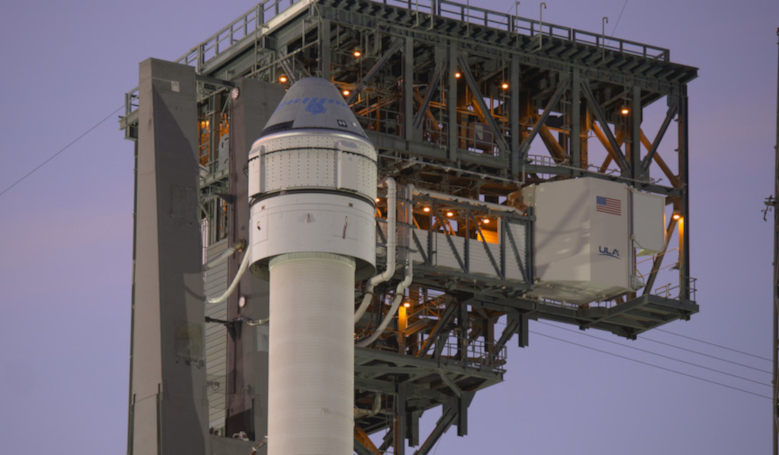Boeing’s CST-100 Starliner spacecraft is good to go on an uncrewed test flight to the International Space Station (ISS) after NASA’s Flight Readiness Review (FRR) gave the company the thumbs up for a launch on 20 December, 2019.
The Starliner’s Orbital Flight Test, which is a necessary step before the first Starliner launch with astronauts on-board can take place, will blast off on top of a 52.4-metre (172-foot-tall) United Launch Alliance Atlas 5 rocket from Cape Canaveral Air Force Station seven days from now, if all goes according to plan.
"I am happy to announce we are go for launch," NASA Deputy Administrator Jim Morhard said during a press teleconference following the FRR.
Should events not pan out as expected, alternative dates have also being lined up if extra time is needed; these include 21, 23 and 25 through 28 December.
The status of flight hardware, software and the space station’s readiness to receive the Starliner spacecraft, were all approved during the full day of briefings and discussion, which was attended by dozens of representatives from NASA, Boeing and United Launch Alliance.
“Together, NASA and Boeing are ready to demonstrate the capabilities of the CST-100 Starliner spacecraft ton top of a human-rated Atlas 5 rocket,” Morhard said. “This is the first flight test to the International Space Station of this new crew-capable system.”
If all goes well with the first test flight, Starliner should be on course to carry astronauts to the space station in 2020. This milestone mission would mark the first time that US astronauts have headed into space from US soil since the space shuttle's last mission in 2011.
Boeing, who holds a contract for two test flights and six missions to the International Space Station, is being paid more than $4.8 billion by NASA for the Starlink programme.
According to the world's largest aerospace company, Starliner, which is reusable up to 10 times with a six-month turnaround time, is designed to fit up to seven people, but NASA missions will carry a crew of only four or five along with time-critical scientific research.
Phil McAlister, director of commercial spaceflight development at NASA, said there was still some “standard open work” to complete and a couple of "technical issues" we have to close out ahead of the launch. “But right now, the 20th is looking good,” he said.
Those open issues include a NASA verification of data showing the Starliner for the Orbital Flight Test matches Boeing’s design and “mission data load,” which will be loaded into the capsule’s computer Tuesday, said John Mulholland, vice president and program manager of Boeing’s commercial crew program.
Both of those should be completed in time for the launch on 20 December.
“While officially getting the authority to proceed with the launch, it’s important to remember that the launch of the Starliner is just the beginning,” said Mulholland at the meeting. “The spacecraft will spend about eight days in orbit, and we’ve got a highly skilled team who will be executing the mission.”
There will undoubtedly be some unexpected results as this is a test, said McAlister, but he added, the results will be a "huge confidence building measure.”











